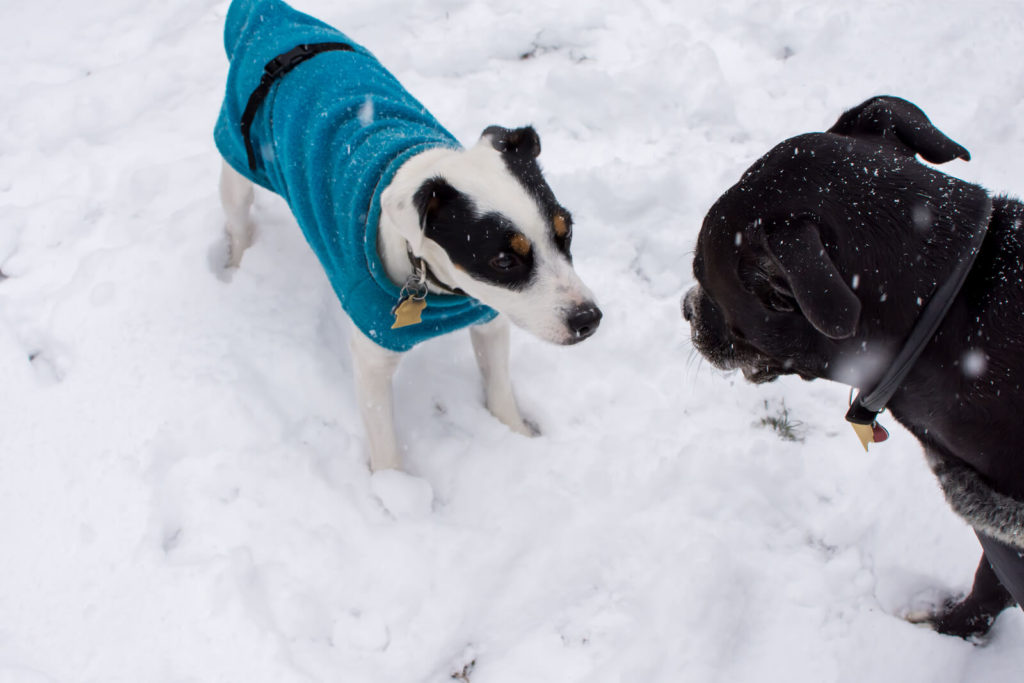While many dogs are well-equipped to handle harsh temperatures, they aren’t completely different than us when it comes to winter’s chill. Some painfully cold days are simply too intense for a dog to go outside, no matter the breed or length of coat. Like humans, dogs will sustain frostbite and hypothermia when left on ice for too long.
Feeling uncertain about taking your dog out into the cold day? Here are some tips for avoiding danger, and keeping them extra warm if a journey into the chill is necessary.

Different dogs follow different rules
As a dog owner may likely intuit, different dog breeds have different tolerances for cold (and hot) temperatures. Huskies are genetically designed to handle prolonged outings in cold weather, while Chihuahua’s will require additional layers when venturing into the snow. Though some of these differences are common sense, make sure to consult a vet or reputable online guide to determine your animal’s true outdoor limitations.
Dog clothing is not only for looks
While it’s certainly cute to see a pet parading around in miniature, human clothing, these layers are often useful in keeping animals comfortable through the winter. If your dog warrants extra caution in cold temperatures, consider buying them a cozy coat, or some practical boots to run in.
Research weather and temperatures carefully
While one can easily notice their personal discomfort in the winter weather, the feeling of a cold day can vary greatly without new boots, a warm hat, and a thick scarf. Your dog often only has their fur and paws to protect them, and is therefore subjected to the ebbs and flows of winter days. Check the windchill and “real feel” for the day online to get an accurate idea of the weather, and make sure you are prepared for the added cold when the sun sets on a short winter afternoon.
Create an indoor or semi-indoor bathroom space
Sounds gross, right? In reality, there are many companies selling indoor pee mats that are both easy to clean and odorless. If your dog has trouble handling icy temps, give them a safe and comfortable plan B on the porch.
Look out for signs of discomfort
Rule number one when traveling through the cold with your dog is this: keep an eye on their behavior. In most cases, your dog will make it plain that they are suffering. Whimpering, seeking warm areas, slowing down, and shivering are all clear signs that your dog is uncomfortable. If you see any of these, bring them indoors. If symptoms persist, or if there is any concern of long lasting ramifications, consult a vet at once.
Winter can be an extremely enjoyable time to be a dog owner, so long as cold winter walks are prepared for. So, bundle up yourself and your dog, and go enjoy the snow!